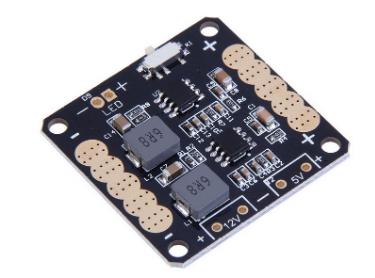The Ministry of Economy, Trade and Industry of Japan recently announced the production data for the PCB industry in June, and Taiwan, Germany, North America, China, South Korea and other countries have also announced relevant data. The following briefly describes the production data of the PCB industry in the first half of 2014:
Japan’s shipments in June showed obvious signs of rebound. Revenue reached 40.67 billion yen, 5.8% more than the previous month. Shipments reached 1.143 million square meters, an increase of 4.8% from the previous month. In terms of month, revenue and shipments Both volume hit a new high in 2014, but when compared with the same period last year, shipment volume increased by 7.8% but revenue fell by 1.9%. This reflects that the reason for the increase in shipments is only due to the decline in prices. For the PCB industry in Japan, which mainly produces build-up multilayer boards, this trend is not uncommon. This year’s shipments rose 8.6% over the same period last year, but revenue fell 4.1%. It can be seen that prices have fallen as much as 12% in the past 12 months. As local demand for PCBs is limited to mobile phones, PCB manufacturers can only lower their opponents by lowering prices and attract limited customers.

As for the other major products of the Japanese PCB industry-double-sided and multilayer flexible boards, the gap between revenue and shipment volume is even greater. Shipments increased by 6.2% compared to the same period last year, but revenue fell sharply by 27.4%. The sales price fell by more than 33% within a year. The main source of customers for double-sided and multi-layer boards are foreign manufacturers of smart phones and tablet computers. Japanese PCB manufacturers mainly face competitors from Taiwan and China.
In the past two months, the revenue and shipments of circuit modules and semiconductor packaging substrates have both reported an increase. The main customers of these products are overseas packaging companies. Looking back at the first half of 2014, its total cumulative revenue was 230 billion yen, a decrease of 1.2% from the same period last year. For the local electronics industry, this is not a sign of a rebound, and it is expected that this year will not be better than 2013 (2013 is the worst year since 2008).
Taiwan announced revenue of NT$194 billion for the first time, an increase of 7.49% over the same period last year. FPC manufacturers reported double-digit growth, nearly 20%; manufacturers are expected to continue to receive orders in the second half of the year, so Taiwan is expected to achieve double-digit growth in 2014.
The electronics industry in North America rebounded in the second quarter of 2014, but the cumulative PCB shipments in the first half of the year fell by 0.3% compared with the same period last year, and it is expected to remain stable this year.
In Germany, the growth rate reached 3.2% in the first half of the year, and manufacturers received more orders in the second quarter. The ups and downs of the German industry are relatively volatile, and it is difficult to make sales forecasts. However, it is not expected that there will be more than 5% growth this year.
South Korea did not publish actual data, but made the following brief comment: Samsung Electronics, the largest customer in the PCB industry, is facing strong competition from Chinese manufacturers. The Galaxy series is Samsung's flagship product, but its market share has continued to decline. When Samsung encountered a crisis, all South Korean PCB manufacturers were worried. Competition has reduced the sales price and production of PCB factories in Vietnam and China, and it is expected that the domestic Korean market will not have positive growth.
In 2014, the global PCB industry will report double-digit profits. Overall, Taiwan and China will continue to rank first, while other markets such as Japan, North America, Western Europe and South Korea will remain stable this year.